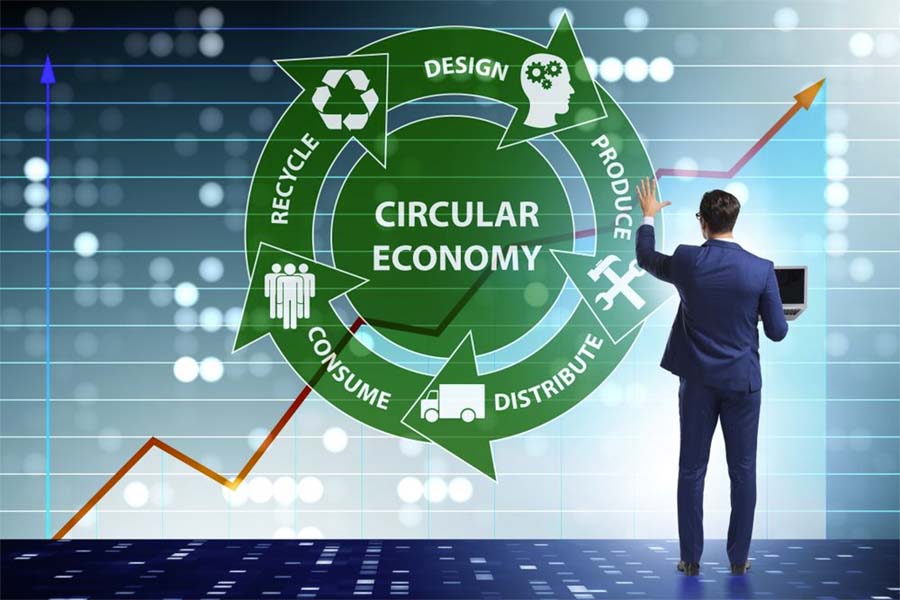

2022/01/06
Reverse logistics pertains to the process of collecting products distributed in the market and redistributing them for reuse, recycling or disposal. The United States is the pioneer in this field. On the other hand, logistics along the normal supply chain, which deals with getting the produced items to the consumers for raw materials, manufacturing, sale or use is “arterial physical distribution.” These terms were named after blood circulation in our body: the arteries, which carry oxygenated blood rich in nutrients away from the heart and distribute it to all parts of the body, and the veins, which collect and carry blood containing carbon dioxide and waste products from every part of the body.

Reverse logistics is of three types: “Collection” for purposes such as recycling; “Return of goods” for handling, for example, erroneous orders and defective goods; and “Disposal” for goods to be processed properly as waste. Given the current situation with intensifying environmental problems, the importance of reverse logistics, especially the operation of collection for reuse and recycling of finite resources, is getting recognized.
While distribution of finished products in the market involves considerable work and cost, the effort to collect the already-distributed goods while maintaining their forms or value for reuse/disposal is extremely demanding. Generally speaking, collected distributed products are a mixture of various parts and materials, which means that they are not sorted for reuse applications. The details of the parts and materials used in these collected products or their history of usage are unknown. In some cases, even hazardous materials may be inside with no apparent signs on the exterior. In the case of Japan, industrial waste containing any of 23 hazardous substances including mercury and cadmium is classified as hazardous waste. Such information is essential for reuse and recycling.

We say “Don’t cry over spilt milk.” The mission of reverse logistics, however, is to challenge this and collect the spilt milk, so to speak. To allow reverse logistics to operate effectively and efficiently, what is most important is the obtaining of accurate information about the identity/background and conditions of distributed products in the market. This, in turn, indicates the importance of traceability for visualization by tracking the forward/reverse logistics processes and the after-sales usage of each product. The information systems applicable for this purpose include barcodes, QR codes*, and Radio Frequency Identification (RFID) by which product/logistic data are wirelessly stored in semiconductor chips embedded in products. In future, management of each product will come online through the Internet of Things (IoT).
It is also critical for the operators of forward logistics such as material/product manufacturers and logistics companies to improve the accuracy of visualization by cooperating and sharing the information with the operators of reverse logistics such as collection/recycling service providers. The effectiveness and efficiency will be enhanced, if the product making and logistics are designed considering the eventual disposal, recycling and reuse. Such an approach is called the “integration of forward and reverse logistics.” For companies and society to be sustainable, integrated forward and reverse logistics will become the key method for realizing a circular economy through the reformed system of waste logistics.
* QR Code is a registered trademark of DENSO WAVE Incorporated.